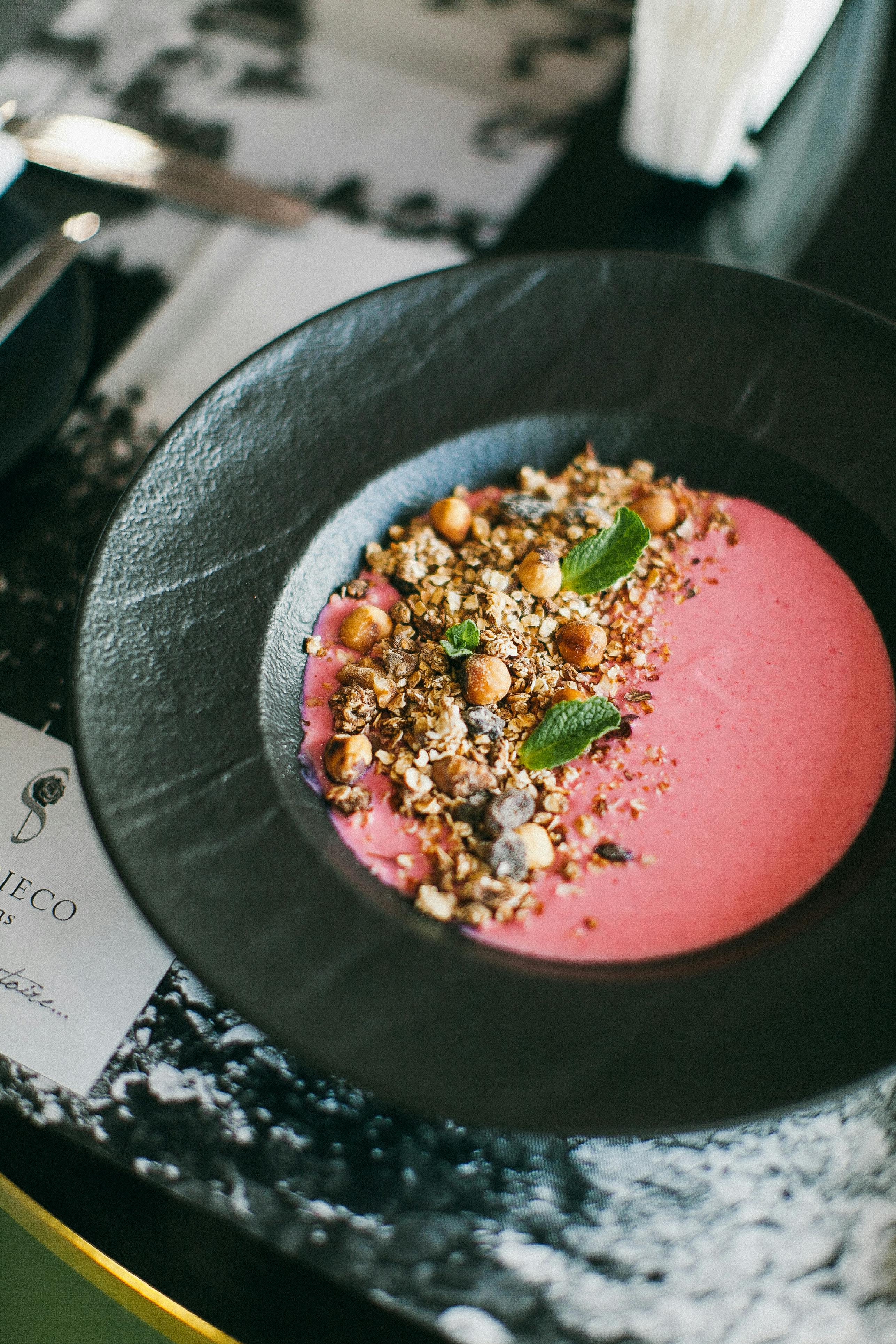Introduction to Grams and Teaspoons in Cooking
The world of cooking and baking encompasses a unique language filled with various measurements that can often confuse even the most seasoned chefs. Understanding how to convert ingredients from grams to teaspoons can significantly improve your culinary experience, ensuring that each recipe turns out perfectly. With precise measurements, you can master ingredient ratios, making it easier to follow recipes while maintaining consistency in cooking.
Knowing the correlation between grams and teaspoons is crucial for both novice and professional chefs. For instance, 5 grams is approximately equal to 1 teaspoon, a fact that many may overlook during recipe preparations. Whether you're measuring baking powder, sugar, or spices, having a grasp of these measurements can enhance your efficiency and accuracy in the kitchen.
In this article, we will explore the essentials of weight conversions, including how to effectively convert grams to teaspoons. We will also highlight the significance of accurate measurements in food preparation and the importance of kitchen tools such as kitchen scales. By the end of this article, you'll have a comprehensive understanding of ingredient measurements, allowing you to approach recipes with confidence.
Key takeaways include mastering conversion techniques for grams to teaspoons, significant cooking tips for accurate measurements, and understanding the role of measurement tools in your culinary pursuits.
Understanding Grams to Teaspoons Conversion
When it comes to cooking and baking, understanding conversion factors is essential. The measurement of 5 grams, equating to approximately 1 teaspoon, serves as a fundamental reference point for many ingredients. However, it's important to note that the conversion from grams to teaspoons is not consistent across all ingredients since their densities vary. For example, 5 grams of sugar will occupy a different volume than 5 grams of flour.
The importance of knowing how to convert grams to teaspoons can’t be overstated. When you're following recipes that require exact measurements, using a kitchen scale to weigh out 5 grams can provide more accuracy than using measuring spoons alone, especially when dealing with dry ingredients. This awareness can lead to better baking outcomes and consistent results in your culinary endeavors.
This naturally leads us to explore various methods for converting grams to teaspoons more effectively. Understanding the ingredient density is key in ensuring accurate measurement during cooking and baking processes, making a difference in the final results.
Grams to Teaspoons: Ingredient Density
Ingredient density plays a vital role in converting grams to teaspoons. For instance, a teaspoon of flour weighs around 2.5 grams, while a teaspoon of white sugar weighs about 4.2 grams. This discrepancy emphasizes the necessity of knowing the specific ingredient you are measuring, as it directly affects the conversion. To accurately convert grams to teaspoons, consider using a conversion chart that lists the average weights for different ingredients.
Among baking ingredients, sugar and flour are often the most commonly used. The weight in grams for one teaspoon varies significantly, making it important to check the conversion standards each time. This knowledge can lead to preventing baking mishaps that arise from incorrect measurements.
By consistently referring to ingredient density, you can ensure that your cooking measurements stay accurate, reducing the risk of cooking inconsistencies. This is especially crucial in baking, where precision is key for achieving desired textures and flavors.
Using Kitchen Scales for Accuracy
One of the best tools for ensuring measurement accuracy is the kitchen scale. By weighing your ingredients in grams, you eliminate the discrepancies that occur with measuring spoons or cups. A kitchen scale allows for precise ingredient weight conversion, making it easier to follow recipes that require specific ingredient ratios.
Utilizing a scale not only offers high precision but also simplifies the measuring process, especially when converting grams to teaspoons in multi-ingredient recipes. For home bakers aiming for perfection, investing in a reliable kitchen scale is essential.
Let’s dive deeper into the suggested practices and kitchen tips to optimize your measuring techniques for future culinary creations.
Culinary Conversions: More than Just Grams to Teaspoons
Beyond just converting grams to teaspoons, understanding the larger framework of culinary conversions is key to confident cooking and baking. This includes knowing tablespoon conversions, fluid measurement differences, and how to adapt recipes from one measurement system to another.
For instance, while 5 grams equates to about 1 teaspoon, it also helps to know how many teaspoons are in a tablespoon. There are 3 teaspoons in a tablespoon, meaning that converting larger quantities becomes more manageable. Getting acquainted with these relationships can empower you to explore more complex recipes, knowing when to apply conversions accurately.
Following these principles leads us seamlessly to explore additional cooking and baking conversions, which will further enhance your culinary measurement skills.
Comprehensive Kitchen Measurements Guide
A kitchen measurements guide can be an invaluable resource for professional and home cooks alike. This guide will typically include a list of standard kitchen measurements and equivalents for various ingredients, including dry and liquid components. Having this information readily accessible can save time and effort in the kitchen.
Moreover, understanding your measurement tools—like measuring spoons, cups, and kitchen scales—is essential for efficiency. When you have a clear outline of conversions available, you can easily switch measurements as needed without compromising recipe integrity.
Each cooking session benefits from maintaining a collection of conversion charts, tapping into a variety of resources that provide insights into ingredient densities. Don't forget to review these guides regularly to refine your knowledge of culinary measurement standards.
Baking Equivalences: Why They Matter
In the baking world, understanding baking equivalences isn’t just a helpful trick; it’s a necessity. Knowing how various ingredients relate in weight can prevent disasters when trying out new recipes. For example, if a recipe calls for a specific weight of flour but you only have a teaspoon measurement at hand, being able to convert grams accurately ensures that your dish will succeed.
Integrating such baking tips into your routine means becoming familiar with common equivalents, such as knowing that 100 grams of butter equals about 7 tablespoons. These equivalences are especially useful when making larger batches or adjusting recipes according to portion sizes.
As you master these concepts, it’s evident how knowing baking equivalences enhances your overall skills in the kitchen, allowing for quick adjustments and precise measurements. A well-rounded knowledge of these conversions leads to greater success in baking endeavors.
Cooking Tips for Accurate Measurements
Accurate measurements significantly influence the success rate of your dishes. By employing effective measuring techniques, you can streamline your cooking process and enhance dish quality. Here are several practical tips aimed at improving your measurement accuracy in the kitchen.
First and foremost, always use the correct measuring tools for the task at hand—measuring cups and spoons for volume, and kitchen scales for weight. Distinguishing between cooking for volume and weight is vital to achieving desired results.
Ensure you are leveling off dry ingredients, like flour, when using cups or spoons. A heaping tablespoon of flour can add significant weight differences to a recipe, leading to inconsistencies. By measuring accurately, you also help maintain proper texture and flavor in your dishes.
Incorporating these tips into your approach creates an environment conducive to successful cooking—where consistency is key, and measurements are precisely followed to allow for the best results in your dishes.
Understanding Measuring Tools and Methods
Understanding and using the right measuring tools can tremendously affect the ease and accuracy of your cooking. Investing in a good set of measuring spoons, cups, and a reliable kitchen scale is essential for any cooking enthusiast. Make sure that your measuring spoons are marked accurately and that you utilize them correctly.
Measurement methods vary between liquid and dry ingredients. For liquids, fill the measuring cup to the desired line, checking at eye level for accuracy. For dry ingredients, spoon the ingredient into the measuring cup without packing it down and level it off with a flat edge.
Employing the appropriate methods will empower you in the kitchen, enhancing cooking efficiency while reducing errors. This approach allows you to achieve consistent results, resulting in a more enjoyable cooking and baking experience.
Common Measurement Inaccuracies and Solutions
Measurement inaccuracies can lead to results that fall flat in the kitchen. Common pitfalls include using rounded measurements instead of leveling off ingredients, misusing the wrong measuring tools, and failing to adapt to ingredient density.
To alleviate these issues, be diligent in your measurement practices by double-checking conversions where necessary. Always ensure you have the correct ingredients for your intended measurements. Consult conversion charts to support you as you familiarize yourself with various ingredient types and their weights. Furthermore, practice consistency in using the same measurement tools throughout your cooking process.
By proactively addressing common inaccuracies, you position yourself for greater success in the kitchen. Catching measurement errors early can lead to improved outcomes and boosted confidence in your culinary skills.
Frequently Asked Questions about Grams and Teaspoons
How do I convert grams to teaspoons accurately?
To convert grams to teaspoons accurately, reference an ingredient density chart that provides the weight for each ingredient in grams per teaspoon. Measure your ingredient weight using a kitchen scale, then use the conversion chart to find the corresponding volume in teaspoons.
What is the difference between volume and weight measurements?
Volume measurements refer to how much space an ingredient occupies, typically expressed in cups, tablespoons, and teaspoons, while weight measurements refer to the actual mass of the ingredient, typically expressed in grams. Understanding this difference is crucial for accurate cooking.
Can I use a kitchen scale for all ingredients?
Yes, a kitchen scale can be used for all ingredients, making it a versatile and valuable tool in any kitchen. Using a scale allows for precise measurement across both dry and liquid ingredients and can help ensure consistent results in your cooking and baking.
Why is accuracy important in cooking and baking?
Accuracy in cooking and baking is crucial because it ensures the right ingredient ratios, preventing errors in texture and flavor. Especially in baking, where chemical reactions play a significant role, precise measurements lead to successful dishes.
What are some common mistakes to avoid in ingredient measurement?
Common mistakes include not leveling off dry measurements, using inaccurate measuring tools, and using volume when weight is required. To avoid these mistakes, always select the correct measuring tools and double-check ingredient weights when following recipes.

Conclusion: Mastering Measurement for Culinary Success
In conclusion, mastering grams to teaspoons and understanding cooking measurements can greatly enhance your culinary skills. Being aware of cooking conversions, densities of ingredients, and accurate measuring methods empowers you to achieve better results in both your cooking and baking endeavors. From using kitchen scales to implementing precise measurements, every aspect of your culinary practice benefits from a conscientious approach to ingredient ratios and performance.
The knowledge gained from this article will enable you to tackle any recipe with confidence, knowing that you have the tools and understanding necessary for success. This will ultimately lead to more enjoyable cooking experiences and greater satisfaction in your culinary creations.

